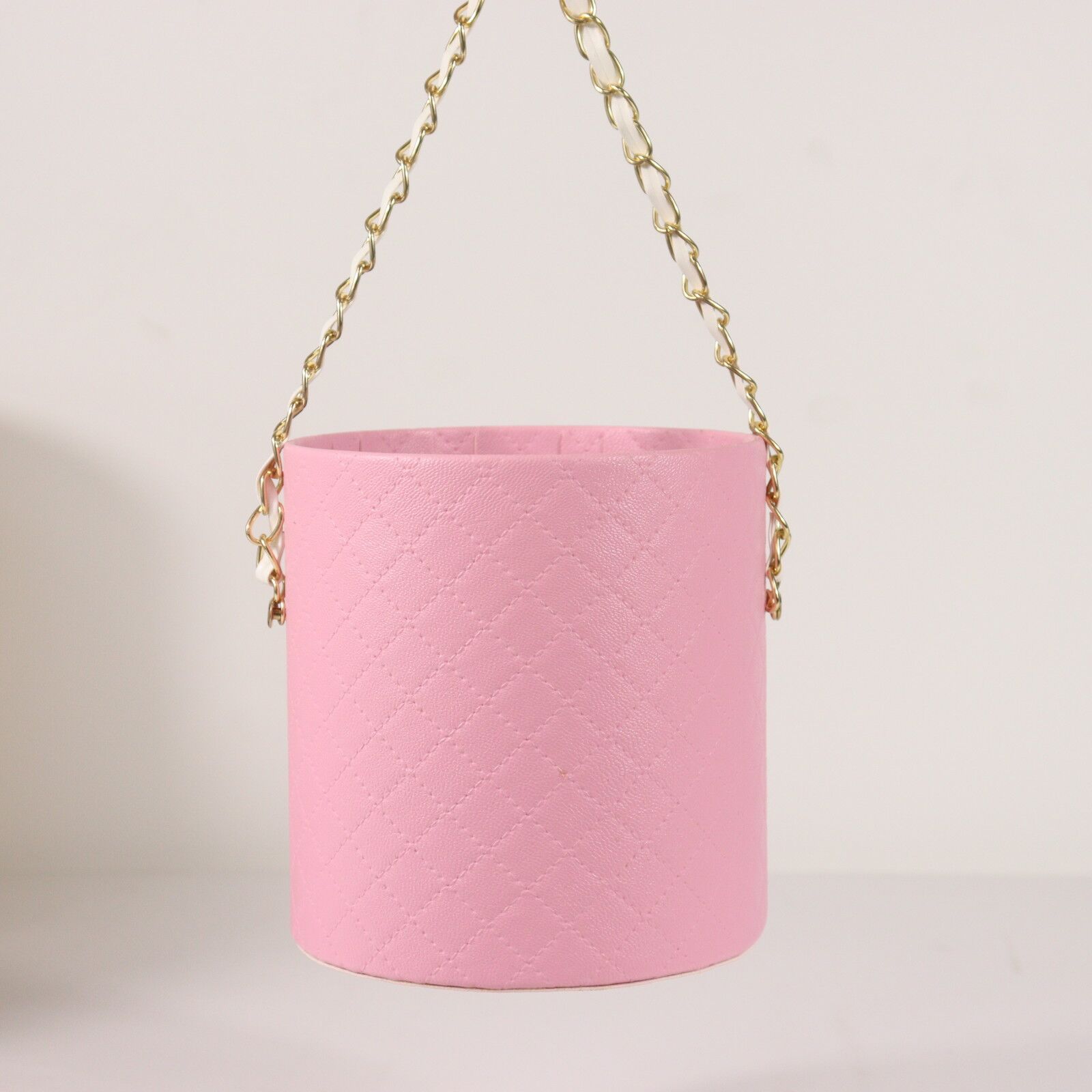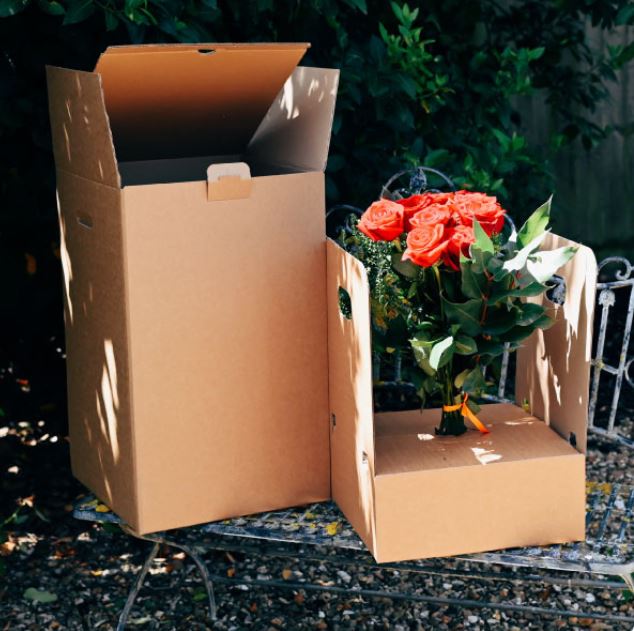- All
- Product Name
- Product Keyword
- Product Model
- Product Summary
- Product Description
- Multi Field Search

Content Menu
>> Step 1: Gather Materials and Tools
● Choosing a Flower Paper Box Supplier
● Advanced Flower Box Techniques
● Troubleshooting Common Flower Box Issues
Creating a beautiful flower box is a rewarding project that can enhance the curb appeal of your home and provide a perfect spot for colorful flowers, herbs, and small plants. Whether you're a seasoned gardener or a beginner, this comprehensive guide will walk you through the process of building, installing, and maintaining a stunning flower box. We'll also explore various design options and touch on the importance of choosing the right flower paper box supplier for your floral arrangements.
Before you begin building your flower box, it's essential to plan carefully. Consider the following factors:
1. Location: Determine where you want to place your flower box. Window sills, deck railings, and fences are popular choices.
2. Size: Measure the area where you'll install the box to ensure a proper fit.
3. Materials: Decide on the materials you'll use. PVC, wood, and composite materials are common options.
4. Style: Choose a style that complements your home's architecture and your personal taste.
5. Plant selection: Research plants that will thrive in your climate and the light conditions of your chosen location.
6. Budget: Determine how much you're willing to spend on materials and plants.
7. Maintenance requirements: Consider how much time you can dedicate to caring for your flower box.
Now that you've planned your project, it's time to build your flower box. Here's a step-by-step guide:

You'll need:
- PVC boards or wood planks
- Screws and nails
- Wood glue
- Drill with bits
- Saw (miter saw or circular saw)
- Measuring tape
- Pencil
- Sandpaper
- Waterproof sealant (if using wood)
- Safety gear (goggles, gloves, dust mask)
Measure and cut your boards according to your planned dimensions. For a basic box, you'll need:
- Two long pieces for the front and back
- Two shorter pieces for the sides
- One piece for the bottom
Tip: Add an extra 1/4 inch to each measurement to allow for adjustments during assembly.
1. Apply wood glue to the edges of the side pieces.
2. Attach the side pieces to the front and back pieces using screws or nails.
3. Secure the bottom piece to complete the box structure.
4. If desired, add decorative trim or molding to enhance the appearance.
Drill several small holes in the bottom of the box to ensure proper drainage. Space them evenly, about 4-6 inches apart.
Sand any rough edges and apply a waterproof sealant if you're using wood. For added protection, consider applying a coat of exterior paint or stain that complements your home's color scheme.
Flower box assembly
For a visual guide on building a flower box, check out this helpful video:

Once your flower box is built, it's time to install it:
1. Mark the installation spots on your window sill or railing.
2. Pre-drill holes for mounting brackets or screws.
3. Secure the box in place using appropriate hardware.
4. Ensure the box is level and stable.
5. If mounting on a wall, use sturdy brackets that can support the weight of the filled box.
6. Consider adding a drip tray underneath to catch excess water and protect surfaces.
Flower box installation
Now comes the fun part – planting your flower box! Follow these steps:
1. Line the box with landscape fabric to prevent soil from escaping.
2. Add a layer of gravel or lava rocks for improved drainage.
3. Fill the box with high-quality potting soil, leaving about an inch of space at the top.
4. Arrange your chosen plants, ensuring a mix of heights and textures.
5. Gently remove plants from their containers and loosen the root balls.
6. Plant your flowers and fill in with additional soil.
7. Water thoroughly until water drains from the bottom holes.
Remember to follow the "thriller, filler, spiller" rule for a visually appealing arrangement:
- Thriller: Tall, eye-catching plants for the center or back
- Filler: Medium-height plants to add volume
- Spiller: Trailing plants to cascade over the edges
Flower box planting
To keep your flower box looking its best:
1. Water regularly, especially during hot weather. Check soil moisture daily.
2. Fertilize every few weeks with a balanced, water-soluble fertilizer.
3. Deadhead spent blooms to encourage continued flowering.
4. Prune and shape plants as needed to maintain desired appearance.
5. Monitor for pests and diseases, treating promptly if issues arise.
6. Replace seasonal plants as needed to maintain year-round interest.
7. Clean the box exterior periodically to remove dirt and debris.
Adapt your flower box plantings to the changing seasons:
- Spring: Plant bulbs like tulips and daffodils, along with pansies and primroses.
- Summer: Use heat-loving annuals like petunias, geraniums, and marigolds.
- Fall: Incorporate chrysanthemums, ornamental kale, and ornamental grasses.
- Winter: Add evergreen branches, berries, and cold-hardy plants like hellebores.
Consider using a mix of perennials and annuals to provide structure and changing color throughout the year.
Seasonal flower box
Get inspired with these unique flower box concepts:
1. Herb garden: Plant a variety of culinary herbs for easy access while cooking.
2. Succulent display: Create a low-maintenance, drought-tolerant arrangement.
3. Butterfly garden: Choose plants that attract butterflies and other pollinators.
4. Edible flowers: Grow beautiful and tasty flowers like nasturtiums and pansies.
5. Vertical garden: Install multiple boxes on a wall for a stunning green display.
6. Monochromatic theme: Use flowers of varying shades of a single color for a sophisticated look.
7. Tropical oasis: Incorporate exotic plants like cannas, caladiums, and coleus for a lush, tropical feel.
Creative flower box ideas
While we've focused on creating permanent flower boxes, it's worth mentioning the importance of choosing the right flower paper box supplier for floral arrangements and gifts. When selecting a flower paper box supplier, consider:
1. Quality: Ensure the boxes are sturdy and well-constructed.
2. Design options: Look for suppliers offering a variety of styles and sizes.
3. Customization: Choose a supplier that allows for branding or personalization.
4. Eco-friendliness: Opt for suppliers using sustainable materials.
5. Price: Compare prices to find the best value for your needs.
6. Minimum order quantities: Consider your volume needs and storage capabilities.
7. Delivery times: Ensure the supplier can meet your schedule requirements.
8. Customer service: Look for responsive suppliers who can address your concerns promptly.
A reliable flower paper box supplier can enhance the presentation of your floral creations and contribute to a positive customer experience. Whether you're a professional florist or simply enjoy creating beautiful arrangements for friends and family, high-quality flower paper boxes can elevate your presentations.
Flower paper boxes
For those looking to take their flower box game to the next level, consider these advanced techniques:
1. Self-watering systems: Install a reservoir and wicking system to reduce watering frequency.
2. Companion planting: Pair plants that benefit each other for improved growth and pest resistance.
3. Vertical integration: Create multi-tiered flower boxes for a dramatic visual impact.
4. LED lighting: Incorporate solar-powered LED lights for nighttime illumination.
5. Smart sensors: Use soil moisture and temperature sensors to optimize plant care.
Even with careful planning and maintenance, you may encounter some challenges. Here are solutions to common problems:
1. Overwatering: Ensure proper drainage and adjust watering frequency.
2. Underwatering: Install a self-watering system or set watering reminders.
3. Pest infestations: Use natural or chemical pest control methods as appropriate.
4. Nutrient deficiencies: Adjust fertilization schedule or switch to a more balanced fertilizer.
5. Root rot: Improve drainage and avoid overwatering.
Creating a flower box is a rewarding project that can beautify your home and provide a perfect space for growing a variety of plants. By following this guide, you'll be well-equipped to design, build, and maintain stunning flower boxes throughout the year. Remember to choose the right flower paper box supplier for your floral arrangement needs, and enjoy the beauty and charm that flower boxes bring to your outdoor spaces.
Whether you're crafting a simple window box or designing an elaborate vertical garden, the principles of good design, proper construction, and attentive care remain the same. With a bit of creativity and effort, you can transform any outdoor space into a blooming oasis that reflects your personal style and brings joy to all who see it.
1. Q: How often should I water my flower box?
A: Water frequency depends on factors like climate, plant types, and box size. Generally, water when the top inch of soil feels dry. During hot weather, you may need to water daily.
2. Q: Can I use regular garden soil in my flower box?
A: It's best to use a high-quality potting mix specifically designed for containers. This ensures proper drainage and nutrient content for your plants.
3. Q: How do I prevent my flower box from rotting?
A: Use rot-resistant materials like cedar or PVC, ensure proper drainage, and apply a waterproof sealant if using wood. Avoid overwatering and check regularly for signs of decay.
4. Q: What are some low-maintenance plants for flower boxes?
A: Consider succulents, geraniums, petunias, marigolds, and trailing vinca for easy-care flower boxes.
5. Q: How can I incorporate a flower paper box supplier into my floral business?
A: Research reputable suppliers, request samples to assess quality, consider bulk ordering for better pricing, and look for customization options to brand your floral arrangements.